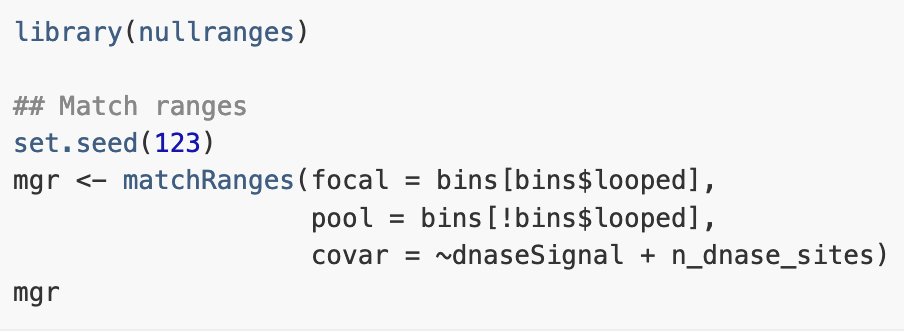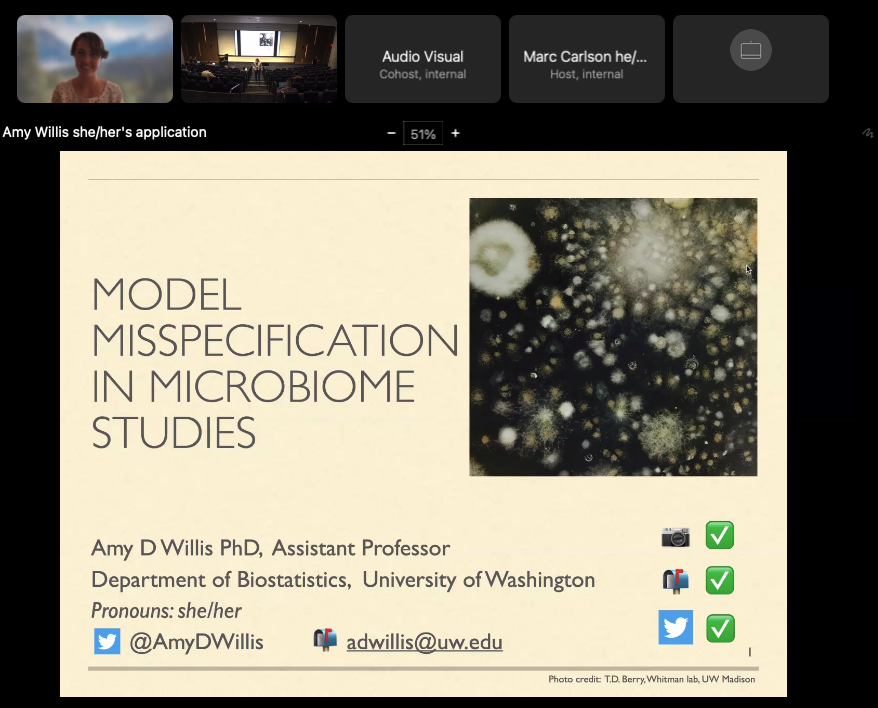
This #EOSS funding from @cziscience for #DESeq2 and #tximeta wrapped up at the end of 2021.
Reporting in this 🧵 on what we developed:
Reporting in this 🧵 on what we developed:
https://twitter.com/mikelove/status/1330840564091252737
1. @kwame_forbes wrote DESeq2::integrateWithSingleCell() which helps user locate publicly available SC datasets followed by visualization with his own R package:
kwameforbes.github.io/vizWithSCE/
Kwame was then a @UNCPREP scholar, now a first year BCB student at UNC 🧬💻🎉
kwameforbes.github.io/vizWithSCE/
Kwame was then a @UNCPREP scholar, now a first year BCB student at UNC 🧬💻🎉

2. Some Bioc folks and a team at UNC worked on extending the tximeta + DESeq2 + plyranges workflow that @_StuartLee @lawremi and I started in the fluentGenomics paper:
sa-lee.github.io/fluentGenomics/
sa-lee.github.io/fluentGenomics/

Plyranges is like dplyr for genomic ranges, allowing users to pipe, mutate, group by, and summarize (or summarise 🇬🇧🇳🇿🇦🇺).
sa-lee.github.io/plyranges/
While writing fluentGenomics, we saw there was space for a modular package in between, facilitating creation of null feature sets.
sa-lee.github.io/plyranges/
While writing fluentGenomics, we saw there was space for a modular package in between, facilitating creation of null feature sets.
Hence was born {nullranges} which sits in between these packages like so. We restricted our focus to only creation of null sets -- it does not do enrichment analysis, as we found that was better handled by the plyranges flexible grammar (didn't try to wrap it all into one) 

{nullranges} has two branches of functionality:
1. block bootstrapping of ranges, written by @WancenM
2. matching ranges based on covariates, written by @ericscottdavis1 and @dphansti
Help also from the #nullranges channel including @mikhaildozmorov @_StuartLee @timtriche
1. block bootstrapping of ranges, written by @WancenM
2. matching ranges based on covariates, written by @ericscottdavis1 and @dphansti
Help also from the #nullranges channel including @mikhaildozmorov @_StuartLee @timtriche
These last two pieces of functionality are being written up now. We have four vignettes (see "Articles" at link) on incorporating these into genomic enrichment analyses -- if you're interested, please reach out to us on GH or Bioc Slack #nullranges
nullranges.github.io/nullranges/


nullranges.github.io/nullranges/



Note the block bootstrapping algorithm is an implementation of Peter Bickel's GSC, see this introduction vignette for citations and related work:
nullranges.github.io/nullranges/art…
We're also discussing with @aaronquinlan and the bedtools team how to promote this statistical framework.
nullranges.github.io/nullranges/art…
We're also discussing with @aaronquinlan and the bedtools team how to promote this statistical framework.
Thanks to @cziscience for supporting this development. It both brought new people into open source software, and brought together an international team that wouldn't have been possible without the extra impetus and funding.
Thanks to @Bioconductor team and community for the foundation for the work. It all sits upon the idea of shared + flexible objects and modular packages, e.g. GRanges, SummarizedExperiment and Hubs. tximeta for example brings together work from literally dozens of developers.
Thanks to NHGRI @genome_gov for funding development of {Salmon} and {tximeta}, and to @nomad421's team for their contributions "upstream" 🐟 that allow the downstream pieces to just work: locating transcripts and genes in the correct genome based on the transcript sequences.
• • •
Missing some Tweet in this thread? You can try to
force a refresh









